It's usually difficult for people to agree on a crowd's size – here's why
The number of people at Friday's inauguration was at the centre of the Trump administration's first stormy White House media briefing on Saturday
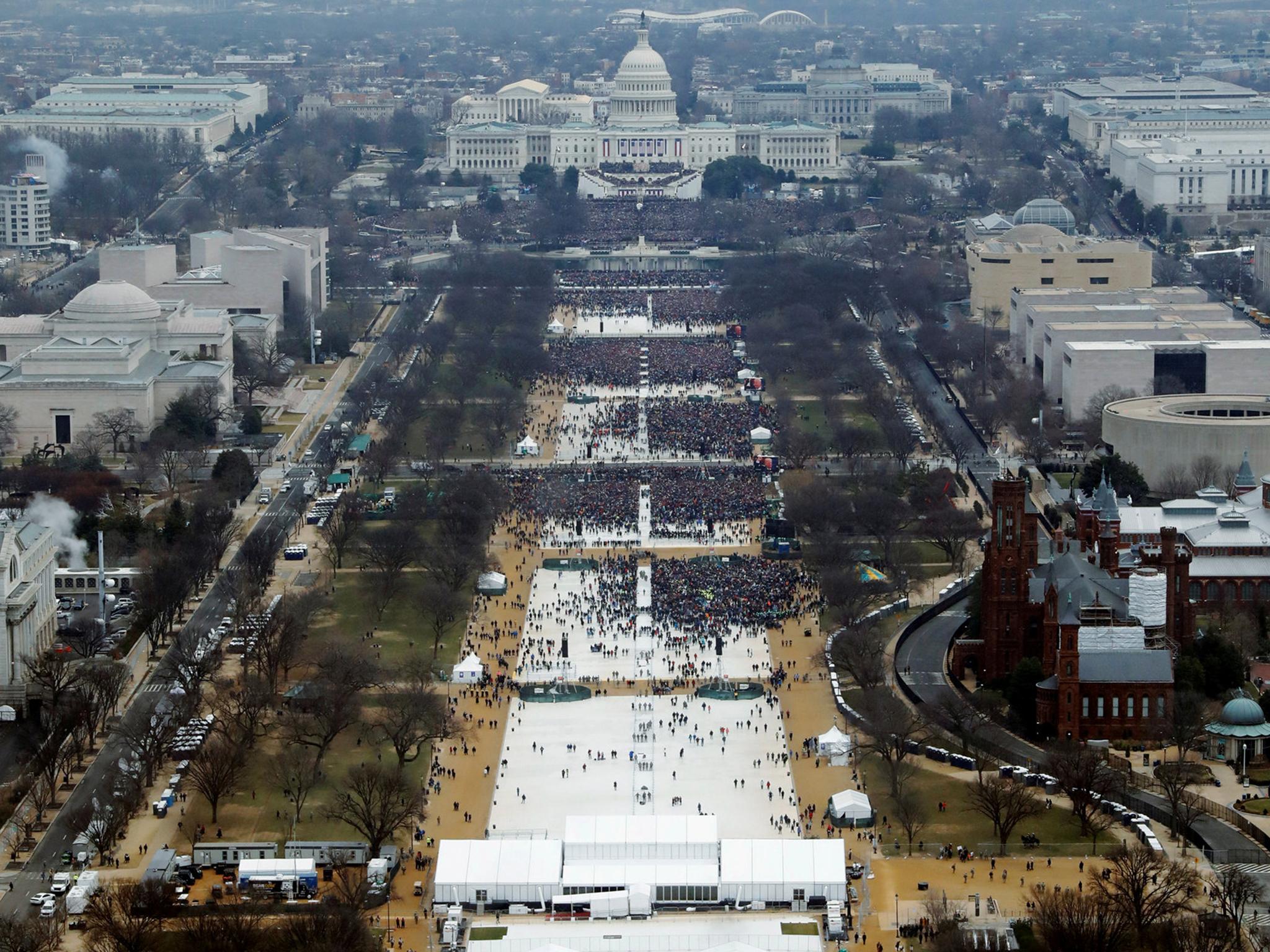
If there is one fact everyone can agree on about the size of the crowds in Washington this weekend, it's that an inordinate amount of time has been spent arguing about the size of the crowds. Short of individually counting attendees one by one – and barring technological advancements that could retroactively analyse images to do so – there may never be undisputed numbers pinned to the inauguration of President Donald Trump or to the Women's March that stormed Washington the following day.
Yet, that has not stopped people from trying to come to a consensus.
Crowd size was at the centre of the Trump administration's first stormy White House media briefing on Saturday. It was debated on social media, amid an array of side-by-side images and accusations of doctored photographs. Predictably, crowd size was even one subject discussed by "Vladimir Putin" on this weekend's Saturday Night Live cold open. Why is estimating crowd size so difficult – and so contentious?
History tells us, though, that disputes over crowd estimates are nothing new. The politicisation of crowd sizes in the US has its roots partly in the Million Man March on the Mall in 1995. At the time, the National Park Service, which oversees the Mall, gave official crowd-size estimates for all major events that took place there.
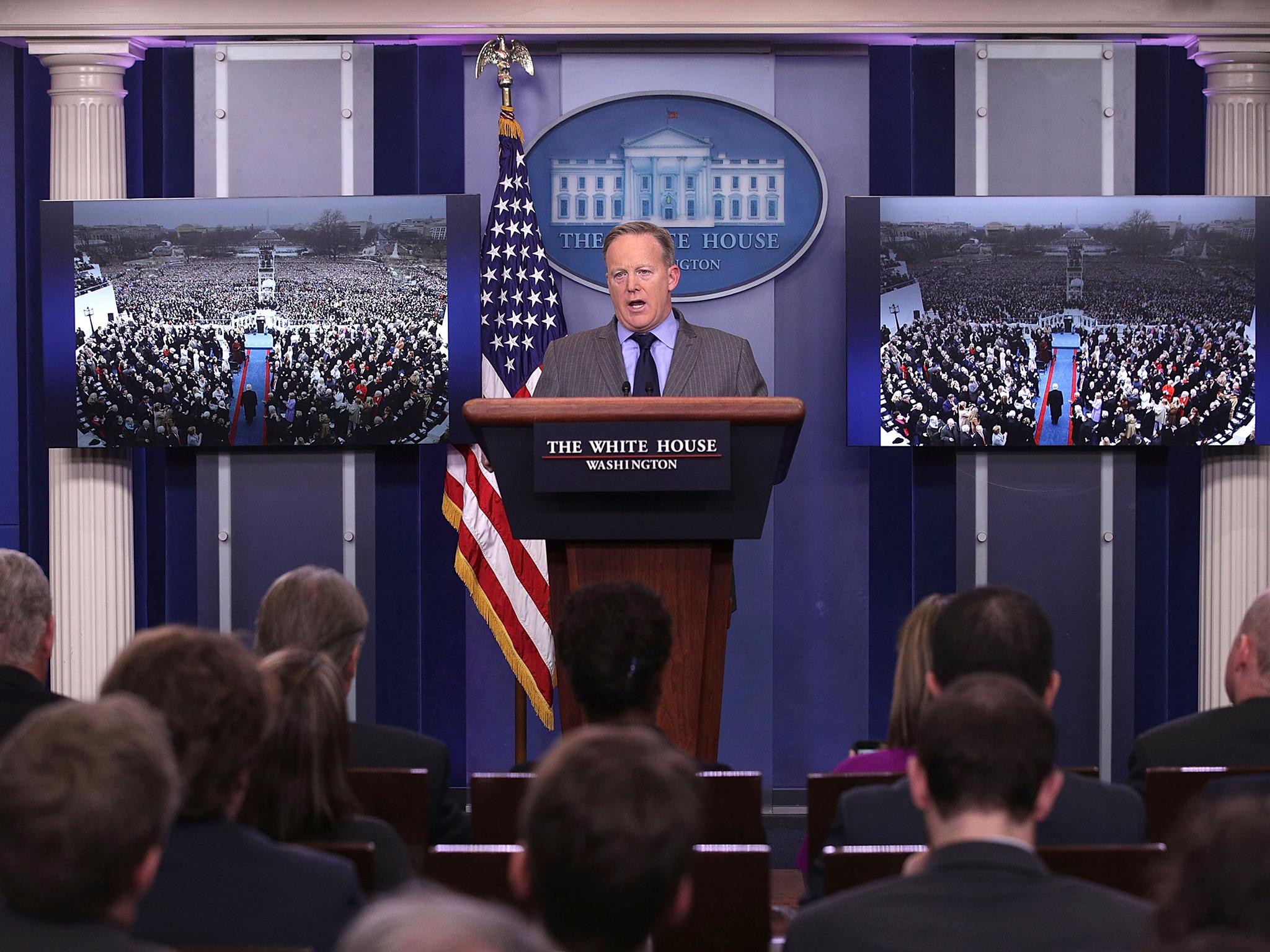
After the Million Man March, the agency released figures that put the crowd at roughly 400,000. That estimate rankled organisers of the march, who threatened to file a lawsuit for defamation. In 1996, Congress banned the agency from using its funds to count crowds, and the parks service has refrained from doing so since. "No matter what we said or did, no one ever felt we gave a fair estimate," US Park Police Major JJ McLaughlin, who had been in charge of co-ordinating crowd estimates, said in 1996, according to the Associated Press.
Still, the agency has continued to estimate crowd size without releasing numbers to the public. In 2009, the US Parks Service released a statement saying it would "not contest" the Washington mayor's office's estimate of 1.8 million attendees for President Barack Obama's first inauguration. Other, more conservative estimates have placed that number at far less. Before that, the record had been 1.2 million attendees for Lyndon B Johnson's inauguration in 1965.
Part of the reason a crowd-size estimate can be so contentious is that it is one of the few metrics available to gauge an event's popularity, real or perceived, said Steve Doig, a data journalism professor at Arizona State University.
"I think it's always meant kind of the same thing: the size of my crowd is a measure of how wonderful I am or how wonderful my movement is," Doig said. "Every political rally of any kind... one of the first things that anybody who is involved in it wants to do is claim a large and enthusiastic crowd. The counter-argument is often, 'No, it wasn't really that big.'"
Doig has researched and taught crowd estimation for several years, but first became interested in the subject while as a Miami Herald reporter in the mid-1980s, when he was assigned to cover an annual street festival. "Every year the organisers were claiming it got bigger and bigger and bigger until it got ridiculous," Doig said. "It would be like, half of Miami would have had to be there."
Realising he could not rely solely on crowd estimates released by the organisers, Doig began researching ways for journalists to independently and accurately do so. He found one of the most commonly used approaches was the "Jacobs Method", devised in the 1960s by Herbert Jacobs, a Berkeley journalism professor whose office happened to be in a tower that overlooked a plaza where student protests took place. Conveniently, the plaza was divided by markings on the ground so that it appeared as a grid from above.
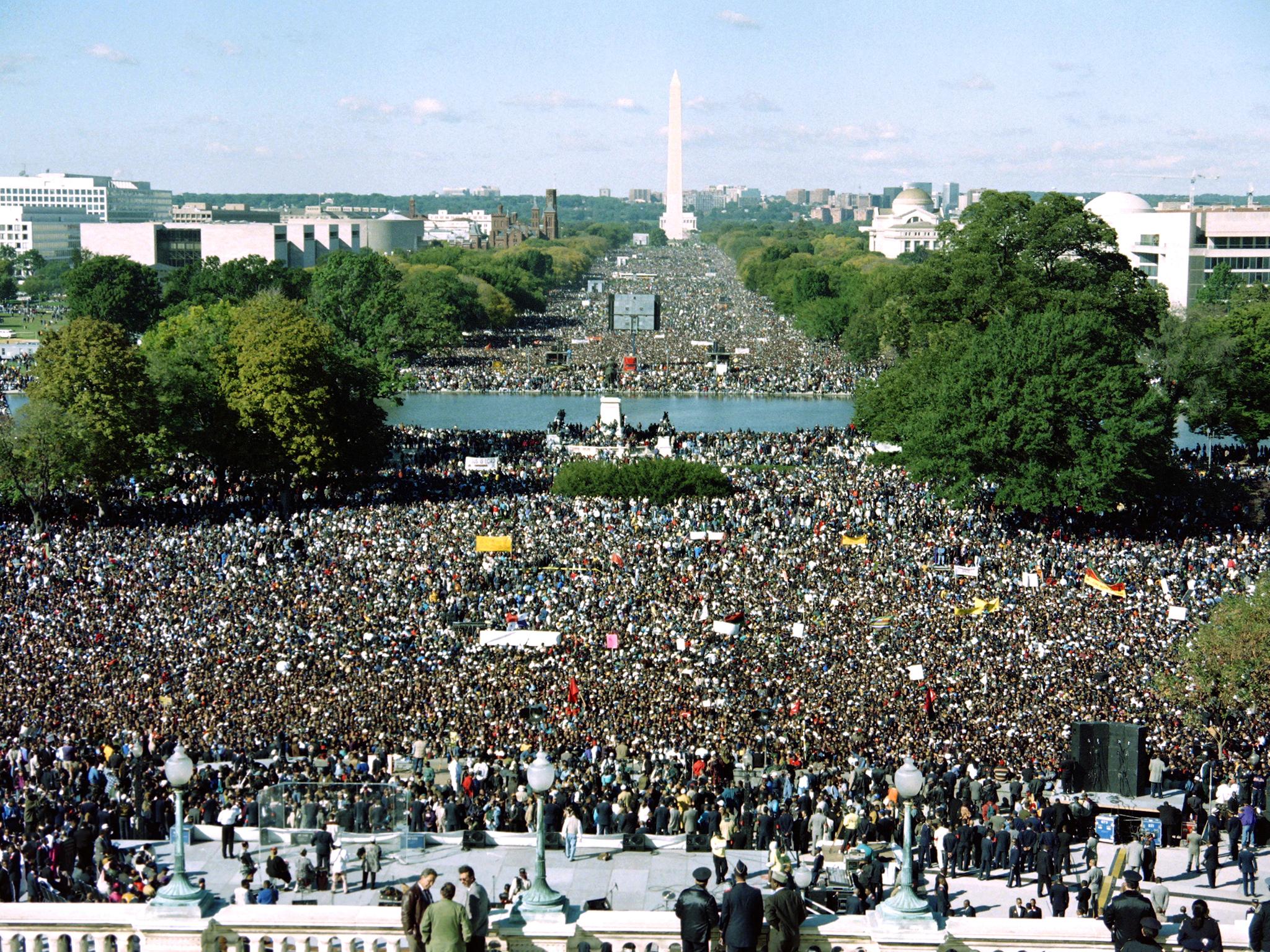
"It was like standing on graph paper," Doig said.
From his vantage point, it was easy for Jacobs to estimate how many students were in each grid, calculate an average and then multiply that average by the number of grids to arrive at a rough estimate – or, as Doig put it, "elementary-school math."
"Measure the area that a crowd is in – basically the square footage – and then divide by whatever your reasonable density estimate is," Doig said. "And that produces a reality-based estimate of how many people are likely to be there."
For the most part, the boundaries of crowd are stable; the density of the crowd is where there is some room for interpretation. In a loose crowd, where people are about one arm's length away from each other, Doig estimates about 10 square feet per person. In a very tight crowd, where people are essentially "back-to-chest", Doig allows about five square feet per person.
Anything less is not really believable, he said. "There are bad estimates where I've seen one square foot per person," Doig said. Even the stampedes in Mecca, where people were crushed in 2015, didn't reach that kind of density, he added. "That's like beyond moshpit."
Washington comes with its own set of challenges when it comes to crowd estimation. In 2015, a report by The Washington Post showed that perspective mattered greatly when estimating crowds on the Mall. When viewing a crowd from a low angle – say, from the inaugural dais – the spaces between people can easily visually disappear, causing the crowd to appear less spaced out.
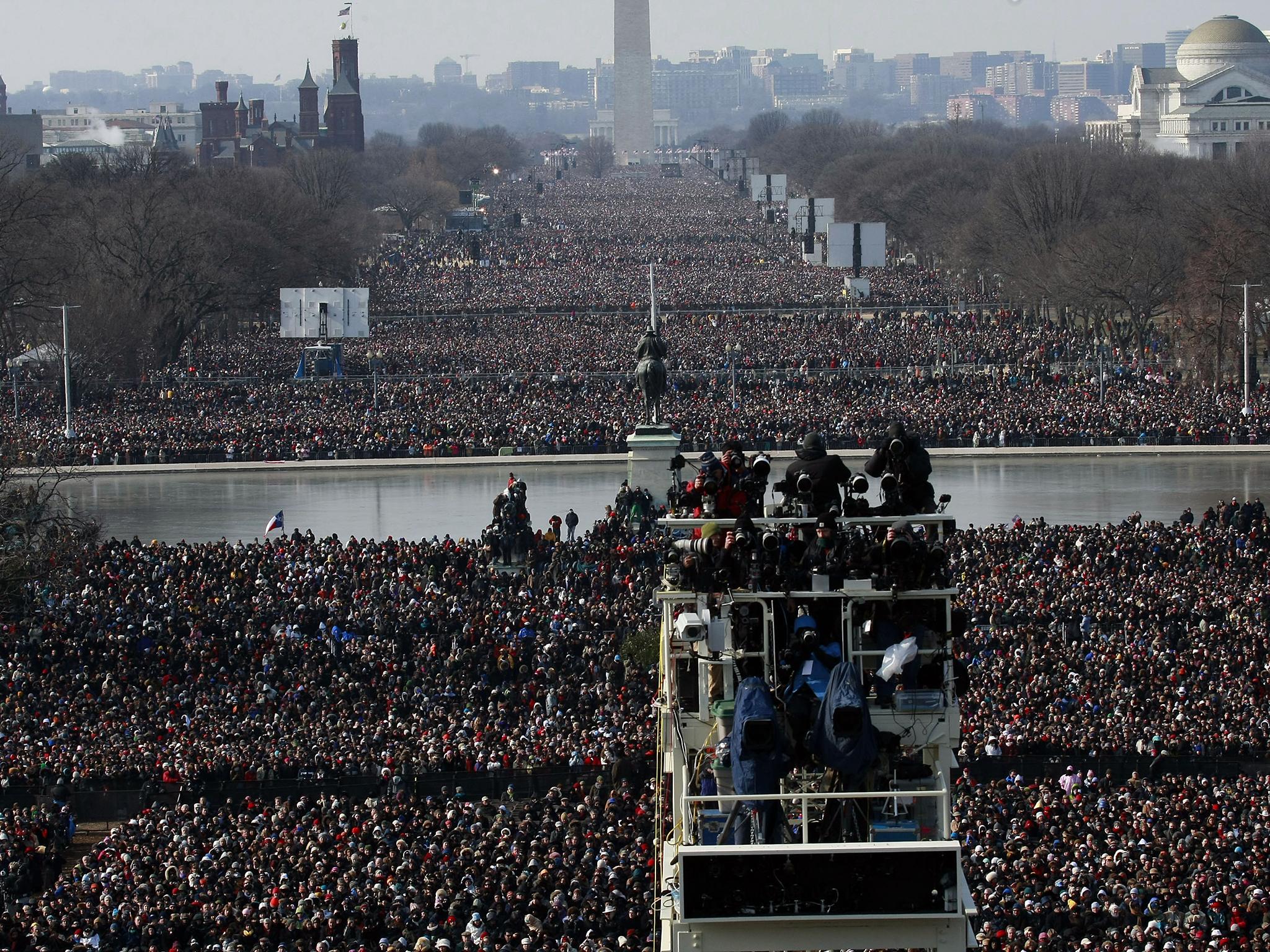
Because of this, the most accurate way to capture a crowd is to take a straight-overhead image. However, much of the city is covered in a no-fly zone, preventing aircraft and most aerial photographers from doing so. About 15 years ago, Curt Westergard and a team developed a tethered, bagel-shaped balloon about 12 feet in diameter that could be floated to record aerial images of large gatherings, ideally from about 900 feet above the ground.
Westergard, the owner of Virginia-based Digital Design and Imaging Service, has since provided crowd estimates for a variety of major events, including the Women's March on Washington on Saturday.
When analysing aerial images afterwards, instead of using grids to estimate attendance, Westergard uses computer programs to draw polygons – any irregular shapes – around clusters of people with similar density. While he acknowledges "grids work", Westergard said an irregular polygon can often be more accurate, because crowd density is not always consistent within a grid. (His fascination with polygons comes in part from his background as a landscape architect: "It's just part of our training to figure out polygons: for example, how much concrete you put around a kidney-shaped swimming pool," he said. "It's calculus, really.")
Westergard and his business partner, Ryan Shuler, try to take politics out of the equation as much as possible.
"Our interest is very technical and scientific," Westergard said. "If it's a rally for X or Y... we'll probably just call [the project] by the date. That way, we'll try to get even more scientific and psychological distance between the event and us. So while others may argue about it, we just try to put blinders on and just deal with the size, which is hard enough. It's extremely hard. This is not a pure science. You don't come up with a hard answer."
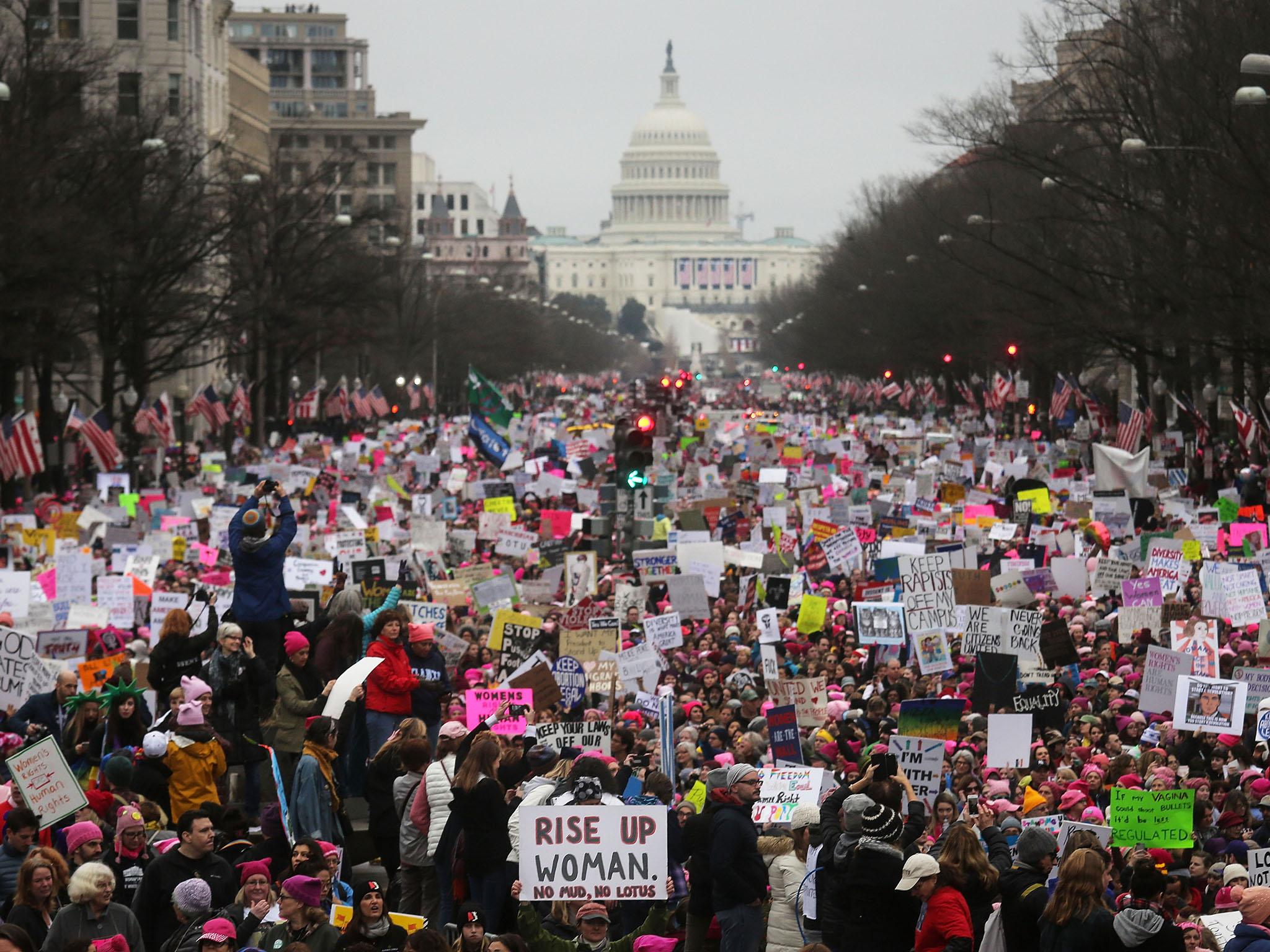
Trump has been known to care, deeply, about the size of his crowds. Throughout his campaign, the mogul frequently inflated the attendance at his campaign rallies. After a stop in Phoenix last July, for instance, Trump claimed he had addressed anywhere from 15,000 to 20,000 people there – even when the Phoenix Fire Department asserted capacity at the event space was capped at 4,200 people, The Arizona Republic reported.
Similar scenes played out at campaign events in Colorado and Ohio, this time with additional accusations against local fire marshals for their 'incompetence', according to PolitiFact. Given this history, it perhaps was no surprise that the crowd-size wars heated up this weekend, in the wake of two historic events that attracted people from both ends of a divided country. Before his inauguration on Friday, Trump had been vamping up expectations for record crowds at his swearing-in ceremony.
"Inauguration Day is turning out to be even bigger than expected," he tweeted on 14 January. "Hopefully we're going to get a million people," he said again in a video ad last Wednesday. "We're going to really make a big statement."
Regarding the Trump inauguration, the Washington Metro released figures on Saturday that said 570,557 people took trips in the system between its early 4am Friday opening and when it closed at midnight. That compared with 1.1 million trips for Obama's 2009 inaugural and 782,000 in 2013, according to Metro.
The day following Trump's inauguration, hundreds of thousands of women descended upon the streets of the nation's capital for the Women's March on Washington, a mass rally for women's rights that some described also as a mass rebuke of Trump.
The Washington organisers had sought a permit for 200,000 for the gathering. On Saturday, they said as many as half-a-million people participated, dwarfing Friday's inaugural crowd.
It was only a matter of time before a crowd-related response from Trump and his team was issued. On Saturday afternoon, Trump claimed at CIA headquarters that, from his view on the dais, attendance at his swearing-in "looked like a million, a million and a half people."
Later that evening, White House press secretary Sean Spicer held a media briefing – to accuse the press of underreporting the crowds at Trump's inauguration. He used a series of false statements to back up his claims, alleging incorrectly that Friday was "the first time in our nation's history" that floor coverings had been used to protect the grass on the Mall.
He also provided Metro ridership figures that were incorrect. Several media outlets quickly pointed out that Spicer was wrong on several counts. (Shortly after the briefing, Spicer's false statements inspired a series of memes and hashtags on Twitter.) "This is an appalling performance by the new press secretary," The Washington Post's Glenn Kessler wrote in his fact-check of Spicer's claims. "He managed to make a series of false and misleading claims in service of a relatively minor issue."
On Sunday morning, Trump senior adviser Kellyanne Conway appeared on Meet the Press and sparred with host Chuck Todd over Spicer's false statements. The Trump team, she insisted, had "alternative facts". Doig noted that turnout at Trump's inauguration, still in the hundreds of thousands, was nothing to sneeze at, he said.
"That's the other thing that sort of aggravates me about the inflated claims," Doig said. "They actually destroy credibility for what was actually an amazing turnout." Still, he said it was clear from overhead images that the inauguration was not by any means "the largest", as Trump's team had claimed. Using his methods, Doig estimates that the crowd size for Trump's inauguration was actually about a third of the size of Obama's 2009 inauguration. Crowd counting scientists came to the same conclusion in a New York Times analysis of photos and videos of the Mall from both events.
"Who are you going to believe?" Doig asked. "Spicer or your lying eyes?"
© Washington Post
Join our commenting forum
Join thought-provoking conversations, follow other Independent readers and see their replies
Comments